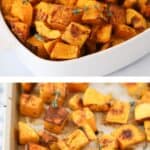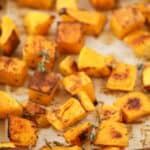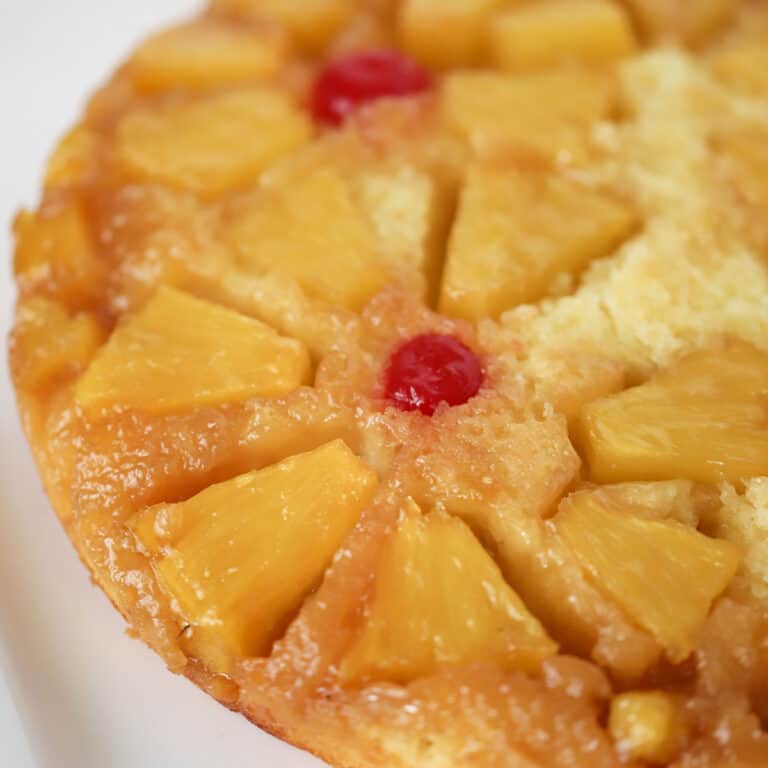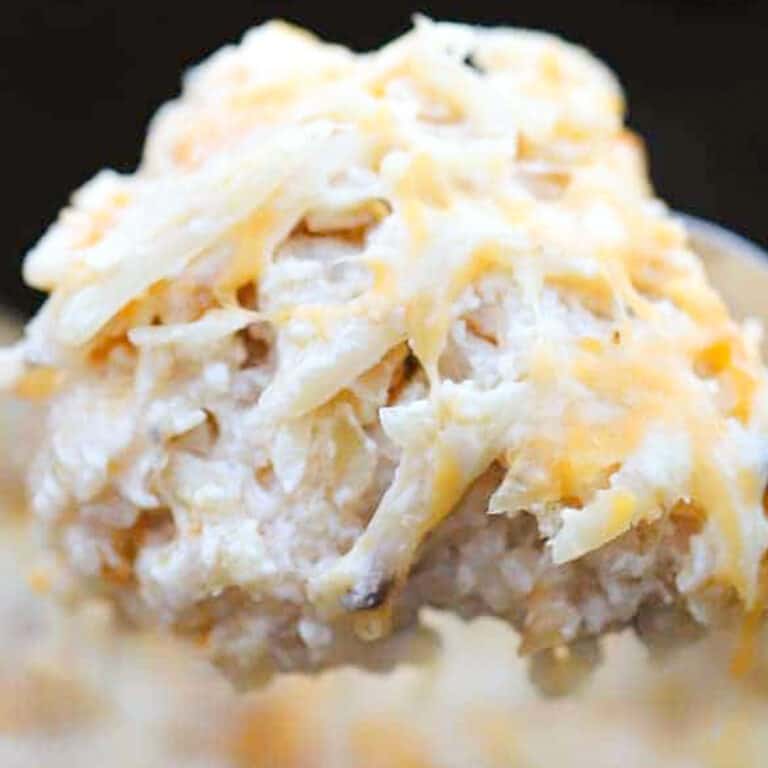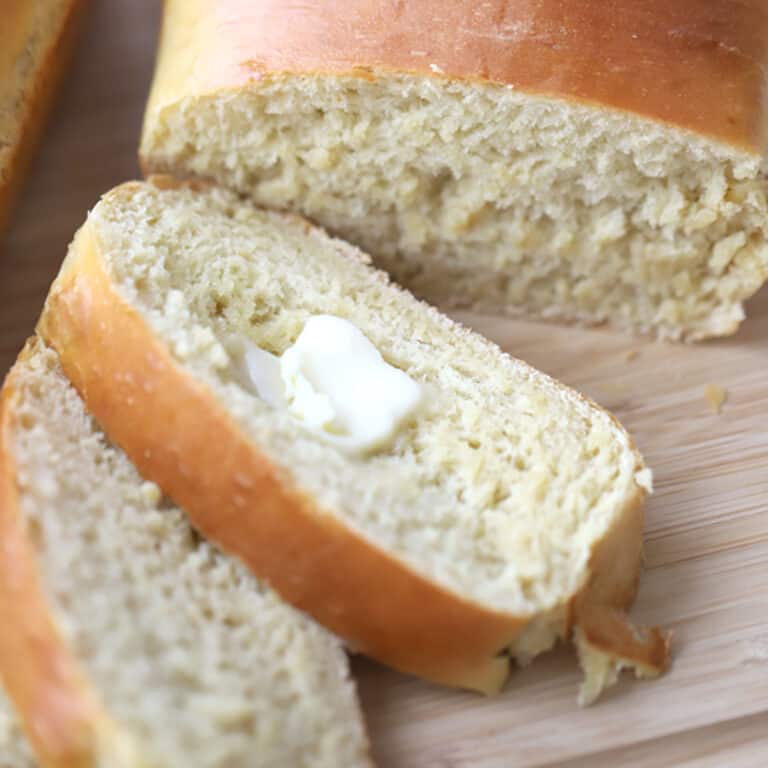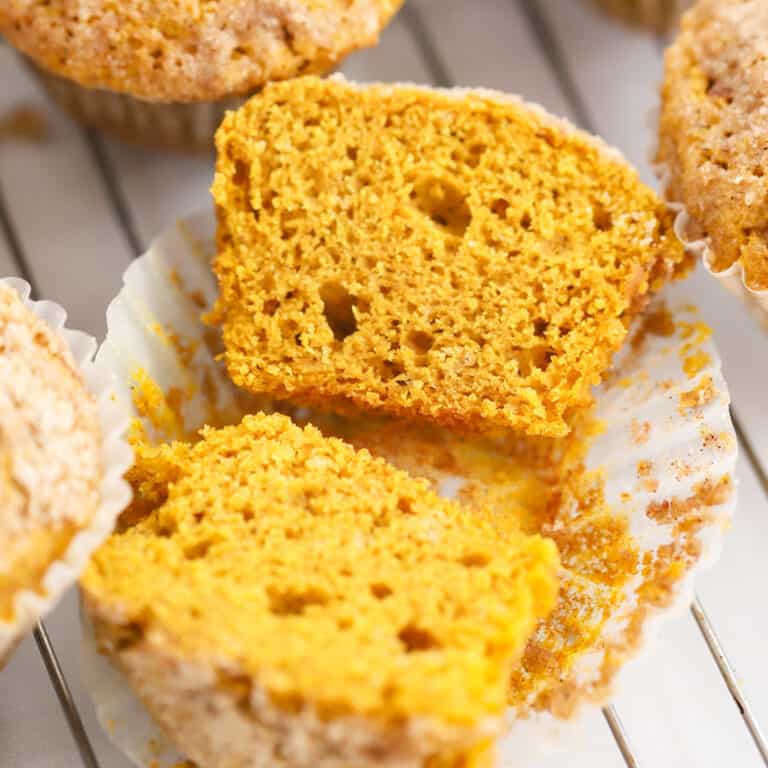This Oven Roasted Squash recipe makes the perfect simple side dish, or seasonal ingredient to be added to soups, salads, pastas, and more. It’s easy to prepare, totally delicious, and incredibly healthy.
If you’re looking for even more squash recipes, check out our post on How to Roast Butternut Squash whole, this Cinnamon Roasted Squash, our Creamy Curry Squash Soup, or this Wild Rice Stuffed Squash.

Oven Roasted Squash Recipe
Once you try it, baked squash is something you will find yourself making over and over. Learning how to roast squash in the oven will give new life to your fall menu prep. It’s a perfect substitute for pumpkin or other roasted veggies, and can be either served as a simple side dish or used in tons of different recipes.
Email This Recipe
Get a link to this recipe emailed so you can save it for later + get all the latest Carefree Kitchen recipes!
By submitting this form you consent to receive emails from The Carefree Kitchen
I love tossing into veggie soup, pasta dishes, casseroles, green salads, or burrito bowls. Roasted Squash even tastes incredible on pizza! As a side dish, you can serve warm as is, or sprinkled with a touch of brown sugar, brown butter, and fresh thyme or chopped sage.
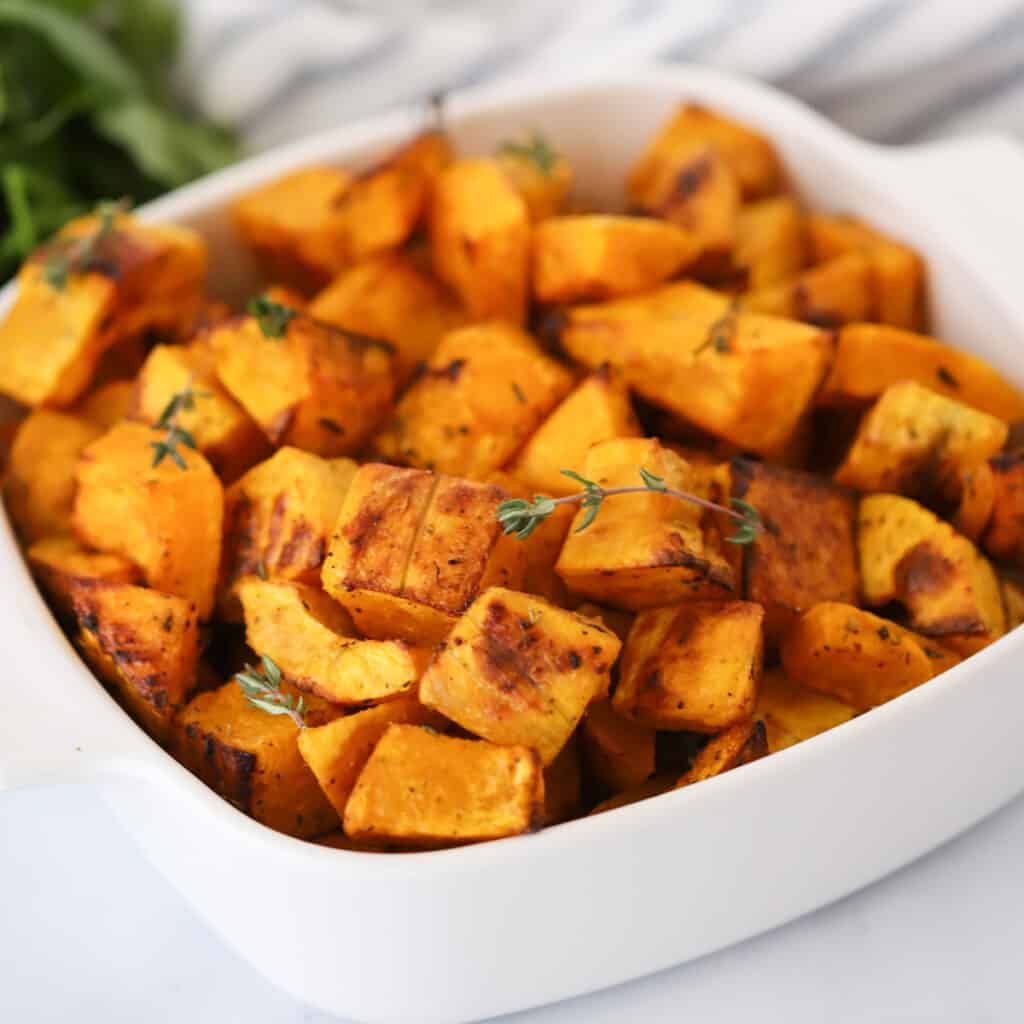
Basic Ingredients You Will Need
- Squash – choose firm, similarly sized butternut squash, acorn squash, or spaghetti squash. If you can find it, you can also use pre-peeled and pre-cut butternut squash from the grocery store. Just make sure than all of the squash pieces are roughly the same size, or about 1”.
- Olive Oil – extra virgin olive oil or avocado oil work great.
- Salt and Pepper
How to Roast Squash in the Oven
- Prepare the squash. Preheat the oven to 400 degrees F. Peel the squash using a vegetable peeler. Using a sharp knife, cut the squash in half lengthwise and scoop out the seeds with a large metal spoon. Cut the squash into 1-inch cubes., then line a baking sheet with parchment paper and lay your squash in a single layer. Season with olive oil, salt, and pepper.
- Roast. Place in your preheated oven and roast the squash for 30-45 minutes, or until a fork or long toothpick can be inserted into the flesh easily.
- Use now or store for later. Once cooked, remove from the oven and allow to cool for a few minutes before serving immediately, or cool completely and store in the refrigerator for up to 5 days. Enjoy!
How to Cook Whole Roasted Butternut Squash
- Prepare the squash. Using a sharp knife, cut the squash in half lengthwise and scoop out the seeds with a large metal spoon. Line a baking sheet with parchment paper and lay your squash on the baking sheet cut side up. Brush with olive oil and sprinkle with salt and pepper.
- Roast. Place in a preheated 425 degree oven and roast the squash for 40-60 minutes, or until a fork or long toothpick can be inserted into the flesh easily.
- Use now or store for later. Once cooked, remove from the oven and allow to cool for a few minutes before serving immediately, or cool completely and store in the refrigerator for up to 5 days. Enjoy!
Recipe Variations
If you are looking to try a little something different with your oven baked squash, here are a few ideas to get you going. This is just the beginning – the sky’s the limit when it comes to flavor combinations:
- Drizzle the squash with honey or maple syrup before roasting.
- Season with cayenne pepper, paprika, or red pepper flakes to add a spicy kick.
- Toss with a blend of curry spices like turmeric, cumin, and coriander.
- Roast with lemon zest, lemon juice, and minced garlic.
- Season with a blend of “everything bagel” seasoning, which includes sesame seeds, poppy seeds, garlic, onion, and salt.
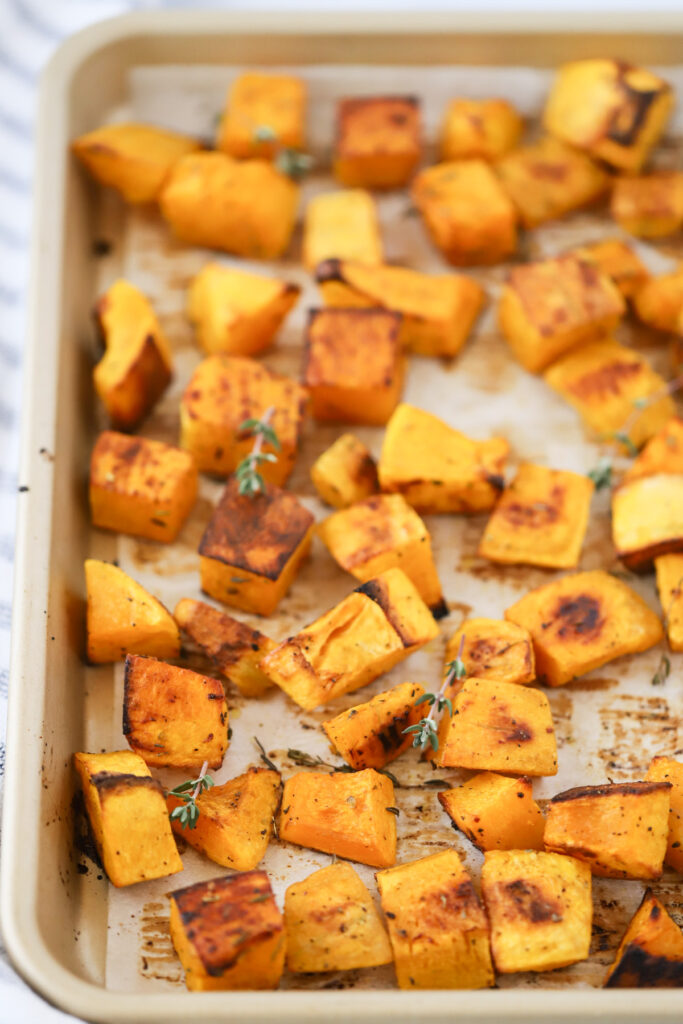
Frequently Asked Questions
The time it takes to roast squash in the oven depends on how hot your oven is and how large your squash are. In this recipe, we suggest cutting the peeled squash into 1-inch cubes before roasting in a 400 degree oven which should take anywhere from 45 minutes to 1 hour. The larger the squash, the longer it will take.
If you don’t mind the texture of the skin, it’s not completely necessary to peel it. The skin of butternut squash is edible and does contain nutrients. However, when cooking butternut squash in cubes, I find it roasts more evenly when the skin has been removed first.
The quickest way to peel butternut squash is with a vegetable peeler. Because the skin is pretty thick, you may want to go around the squash a couple of times.
Absolutely – if you plan on using the baked squash for something like butternut squash soup, or anything to where it will be blended up, you may as well save yourself some prep time. All you need to do is cut the squash in half, scoop out the seeds, drizzle with olive oil, season with salt and pepper, place cut side up on a baking sheet, and roast in a preheated 420 degree oven for about one hour.
Storing and Freezing Instructions
- Refrigerator: store Oven Roasted Squash in an airtight container in the fridge for up to 5 days.
- Freezer: roasted squash can be transferred to an airtight container and stored frozen for up to 2 months. To thaw, transfer to the fridge overnight.
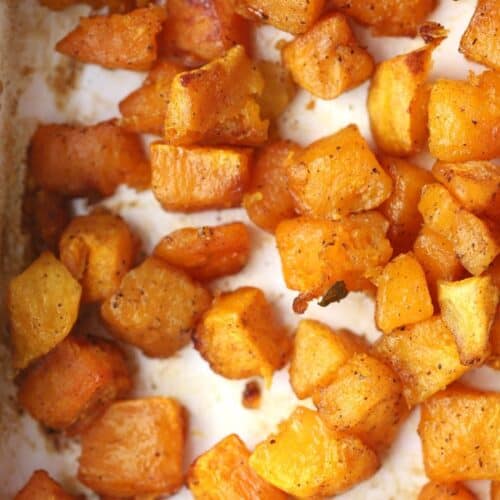
Oven Roasted Squash Recipe
Ingredients
- 2 pounds Butternut or Acorn Squash , peeled and cut into 1" chunks
- 3 tablespoons olive oil
- 1 teaspoon salt
- 1/4 teaspoon black pepper
Instructions
- Preheat the oven to 400 degrees F.
- Peel the squash using a vegetable peeler. Using a sharp knife, cut the squash in half lengthwise and scoop out the seeds with a large metal spoon. Cut the squash into 1-inch cubes.
- In a small bowl, combine the cubed squash, olive oil, salt, and pepper. Lightly toss until evenly coated then transfer onto a baking sheet lined with parchment paper and adjust so it is in a single layer.
- Pour the squash onto baking sheet lined with parchment paper.
- Bake for 30-45 minutes, or until the edges are golden brown and the insides are tender, turning the squash over with a spatula every 20 minutes.
- Remove from the oven and let cool slightly before serving warm. Enjoy!
Nutrition
Did you make this?
Don’t forget to leave a rating below and make sure to follow on Pinterest, Instagram and Tiktok for more!
More Roasted Veggie Side Dishes
- Chili Spiced Sweet Potato Chunks
- Zucchini Fries
- Cinnamon Roasted Squash
- Roasted Acorn Squash Soup
- Roasted Brussels Sprouts and Sweet Potatoes
- Easy Oven-Roasted Asparagus
- Oven-Roasted Broccoli with Garlic and Lemon
- More Fall Recipes
- More Easy Side Dishes
This easy Oven Baked Squash is the perfect simple fall side dish. It also tastes great added to soups, stews, casseroles, pastas, and more.
Categories:
Christmas, Dairy-Free, Fall Recipes, Gluten-Free, Healthy, Nut-Free, Sides, Thanksgiving, Vegan, Vegetarian, Veggies, Winter Recipes,